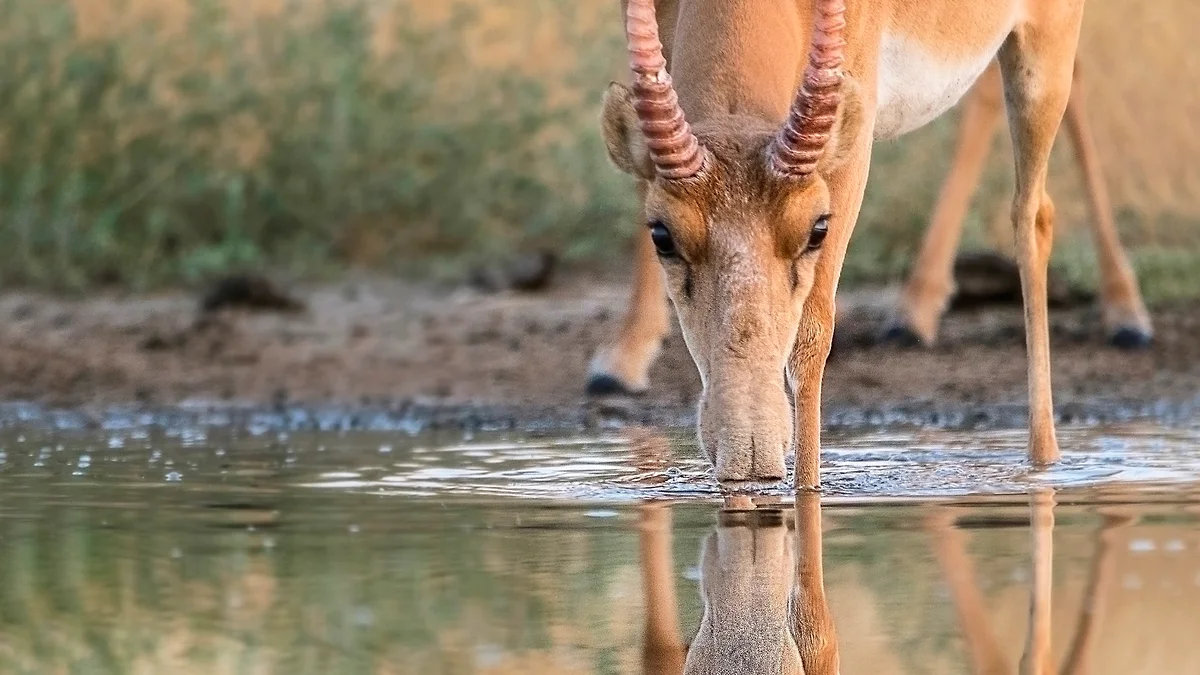
A hundred years ago, hundreds of thousands of saigas lived in the Russian steppes, but by the early 2020s, only thousands remained. Over the 20th century, this species has become one of the most vulnerable on the planet. The Kommersant newspaper published a large article about how in recent years they have managed to stop the extinction of this amazing relict animal.
Anna Yachmennikova, senior researcher at the Laboratory of Behavior and Behavioral Ecology of Mammals, A. N. Severtsov Institute of Ecology and Evolution RAS, told reporters about how animal monitoring occurs and about the implementation of the program.
Part of the modern range of the relict antelope in Russia has been given protected status. Thus, in the habitat of the population of the North-Western Caspian Sea, the state natural biosphere reserve “Chyornye zemli” (Republic of Kalmykia) and the state natural reserve of regional significance “Stepnoy” were formed.
“In the 50–60s, the number of saigas in the North-Western Caspian region reached almost 800 thousand animals, but in the last decades of the 20th century it rapidly declined. In 1998, it was about 150 thousand animals, in 2006 - 14-16 thousand, in the spring of 2011 it no longer exceeded 7 thousand individuals, and in the summer of 2019 it decreased to a catastrophic 5 thousand,” says the director of the state reserve “Chyornye zemli" Bataar Ubushaev.
Prized trophy
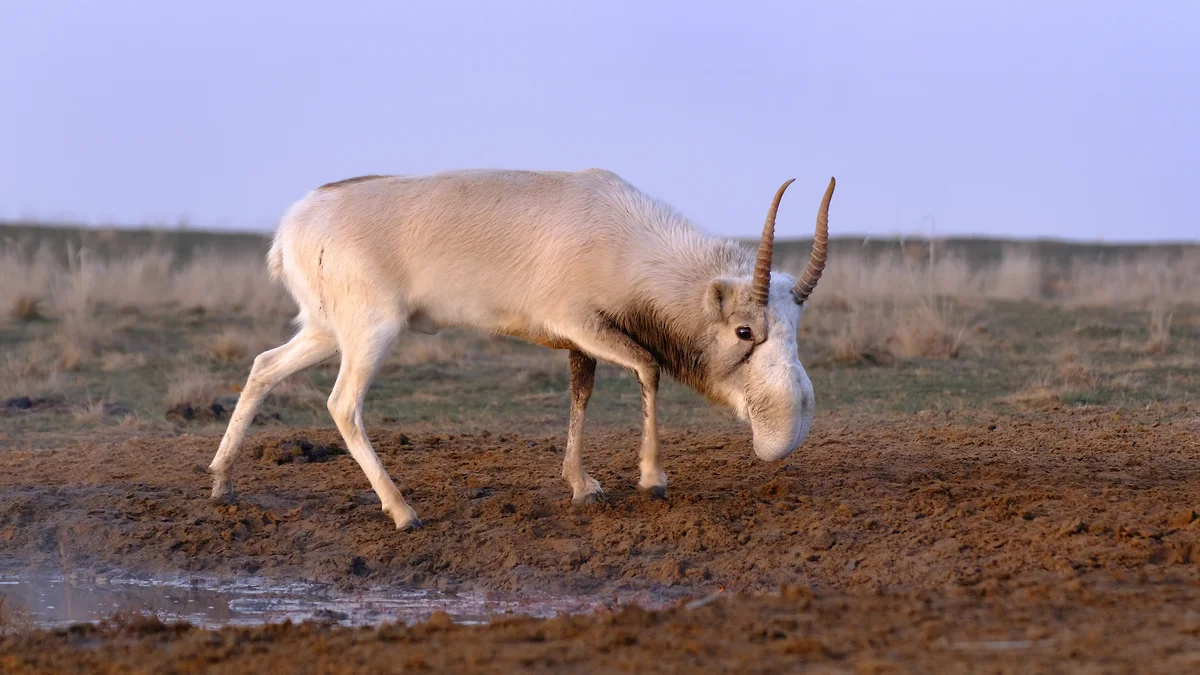
The reason for the rapid decline in the population was both intensive economic activity and the increasing scale of hunting for this animal.
“The prevailing view is that the main reason was the massive illegal hunting of saigas for the very profitable trade in horns,” says Bataar Ubushaev.
In Soviet times, saiga hunting was so popular that the Saiga family of hunting rifles was named after the animal. They were developed in the 1970s specifically for shooting saigas - it was believed that the antelope should be fought because it destroys steppe crops. At one time, until about the mid-1990s, saiga hunting was also encouraged by global conservation groups: its horns served as an alternative to rhinoceros horn.
Habitat area
There are currently five saiga populations in the world. Two of them live in Russia - in the North-Western Caspian region in the Chyornozemelsky, Yustinsky and Yashkulsky regions of the Republic of Kalmykia, as well as in the Limansky district of the Astrakhan region. Another population, the Ural one, is transboundary: these animals move between Kazakhstan and the Left Bank of the Volga - Astrakhan, Volgograd, Saratov, and Orenburg regions.
Natural causes also had their influence. “Saiga as a species is characterized by sharp fluctuations in numbers. During the 20th century, the saiga population of the North-Western Caspian region was on the verge of extinction three times. The fact is that if during the natural period of depression in the number of this antelope there is a powerful anthropogenic pressure, then the species may disappear completely,” says a senior researcher at the Laboratory of Behavior and Behavioral Ecology of Mammals at the A. N. Severtsov Institute of Ecology and Evolution (IEE) RAS Anna Yachmennikova.
Disturbance of balance
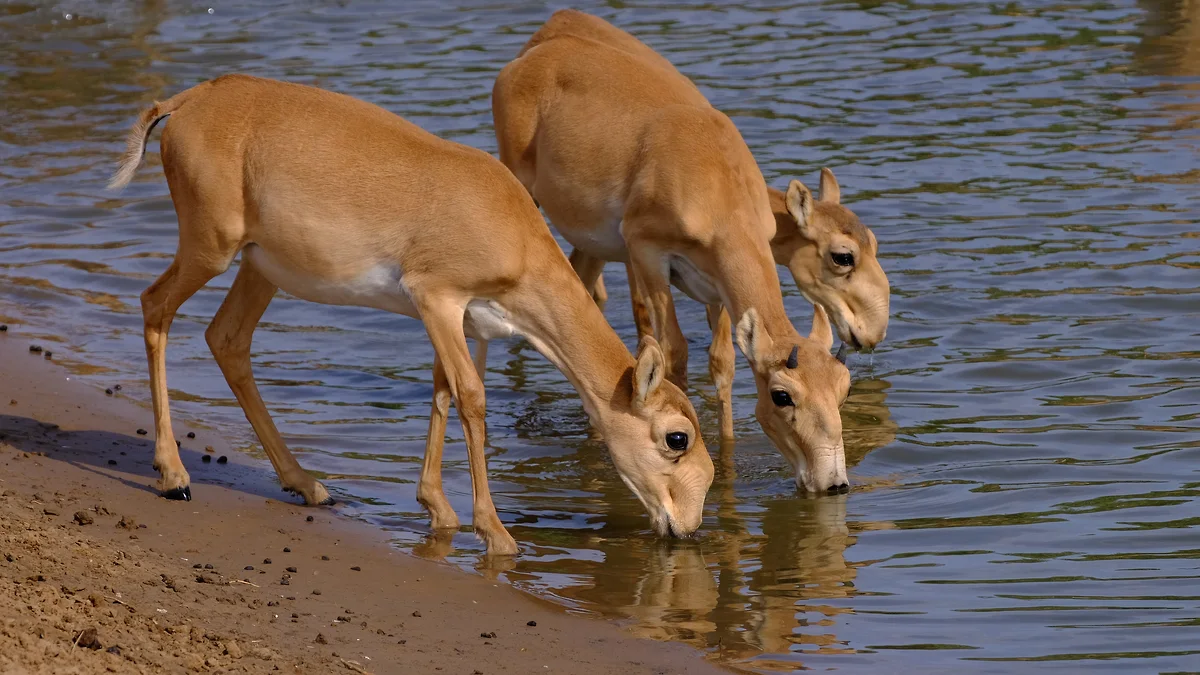
The disappearance of the saiga also poses a threat to unique steppe and semi-desert ecosystems. The fact is that their sustainability depends on maintaining natural balance.
“Steppes and semi-deserts are extremely complex ecosystems, consisting of a huge number of interconnected components. If you remove one from it, the others will also suffer. Thus, we can say that the saiga is one of the edificatory species for steppe and semi-desert ecosystems,” explains Bataar Ubushaev, director of the Black Lands Nature Reserve.
The problems of preserving the biodiversity of certain biomes cannot be solved without preserving key species that play an important role in the functioning of ecosystems, adds Galina Kalmykova, state inspector of the Stepnoy nature reserve.
“The saiga antelope is an important component of the biodiversity of the arid landscapes of Eurasia and the only antelope species found in Europe. In the biocenoses of the steppes and deserts of Russia, the saiga population plays a significant role, and its loss from the structure of ecosystems not only reduces the level of biodiversity, but also leads to their degradation,” she emphasizes.
Renovating water sources and fighting steppe fires
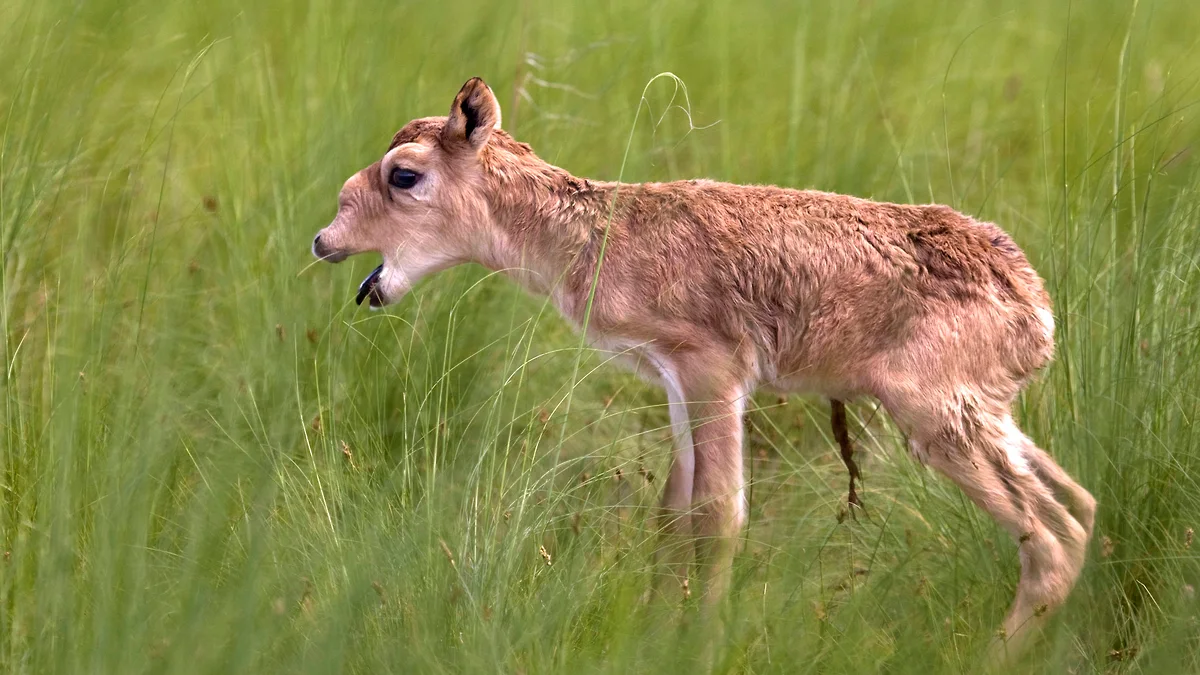
Today, in Chyornye Zemli and Stepnoye, the conservation and reintroduction of saiga is carried out as part of LUKOIL’s corporate program for the conservation of biological diversity. It is part of the federal project “Preservation of biological diversity and development of ecological tourism” of the national project “Ecology”. An agreement on cooperation between LUKOIL and the Russian Ministry of Natural Resources was concluded in March 2020.
The company developed an action plan for 2020–2024 with the assistance of the management of Chyornye Zemli and Stepnoye, together with the expert environmental and scientific community.
“LUKOIL’s help cannot be overestimated. The funds that are allocated to the Stepnoy nature reserve starting in 2020 allow us to increase the number of security raids, carry out measures to prevent fires, and clear water sources,” states Galina Kalmykova, state inspector of the Stepnoy nature reserve.
Over five years, as part of the implementation of the plan, large-scale work has been carried out: water carriers have appeared for rapid response in case of fires, old artesian wells have been cleared to organize water sources for wild animals. Fire-fighting equipment was purchased and monitoring towers were built.
With the help of machinery and special attachments, the territories of the reserves were cleared of dry vegetation. Using plows, mineralized firebreaks were laid, which divided the protected areas into sectors. The roads have been leveled and cleared, which allows inspectors not only to move quickly when conducting security raids, but also to quickly arrive at places of possible fire.
“The measures made it possible to reduce the dangerous impact of fires, one of the most negative factors for the saigas’ habitat,” emphasizes Galina Kalmykova.
Saiga Day
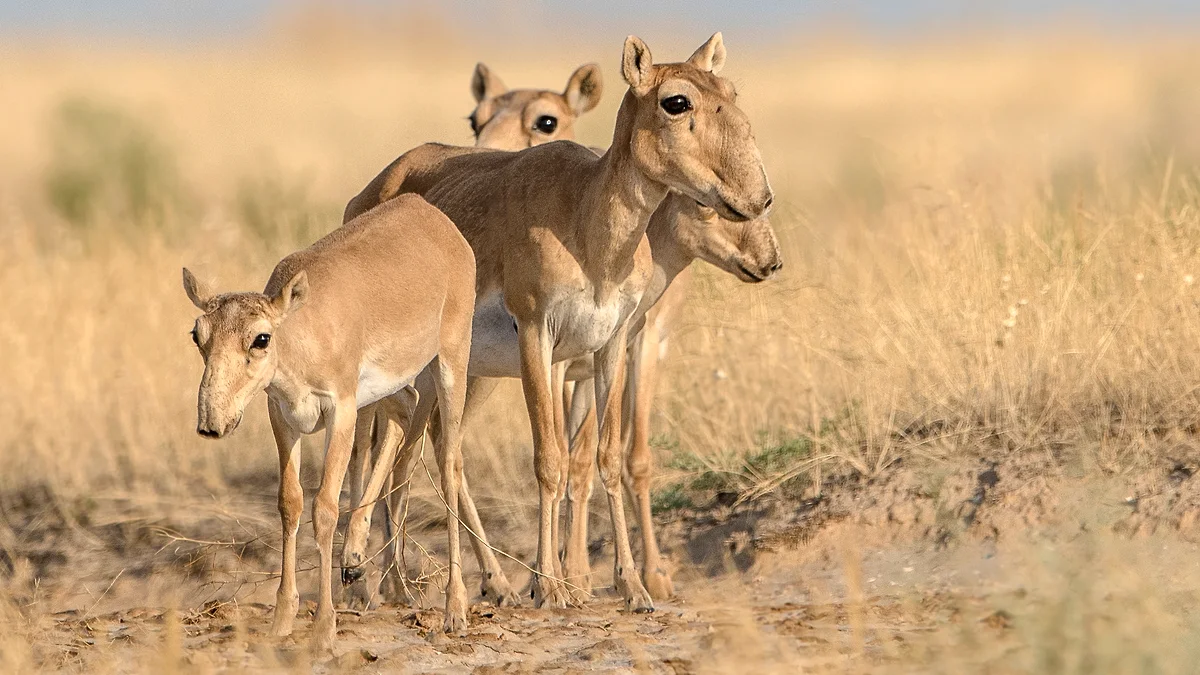
The plan also includes the purchase of equipment - copters, binoculars, thermal imagers, camera traps, protective clothing for government inspectors, radio stations and cellular amplifiers, vehicles for patrolling the territory. This allows to quickly respond and prevent cases of poaching, and is also used for scientific purposes of monitoring and recording saigas.
In addition, scientific and educational events are held as part of Saiga Day.
“Thanks to funding, we can work closely with the local population, hold conversations with farmers about the need to comply with environmental legislation and explain their role in preserving both the saiga and the entire biodiversity of their native land,” notes Galina Kalmykova.
Particular attention is paid to working with the younger generation: competitions, excursions are held, and volunteer events are organized.
“Today, poaching has been completely eliminated in the reserve,” states Galina Kalmykova.
How to count saigas
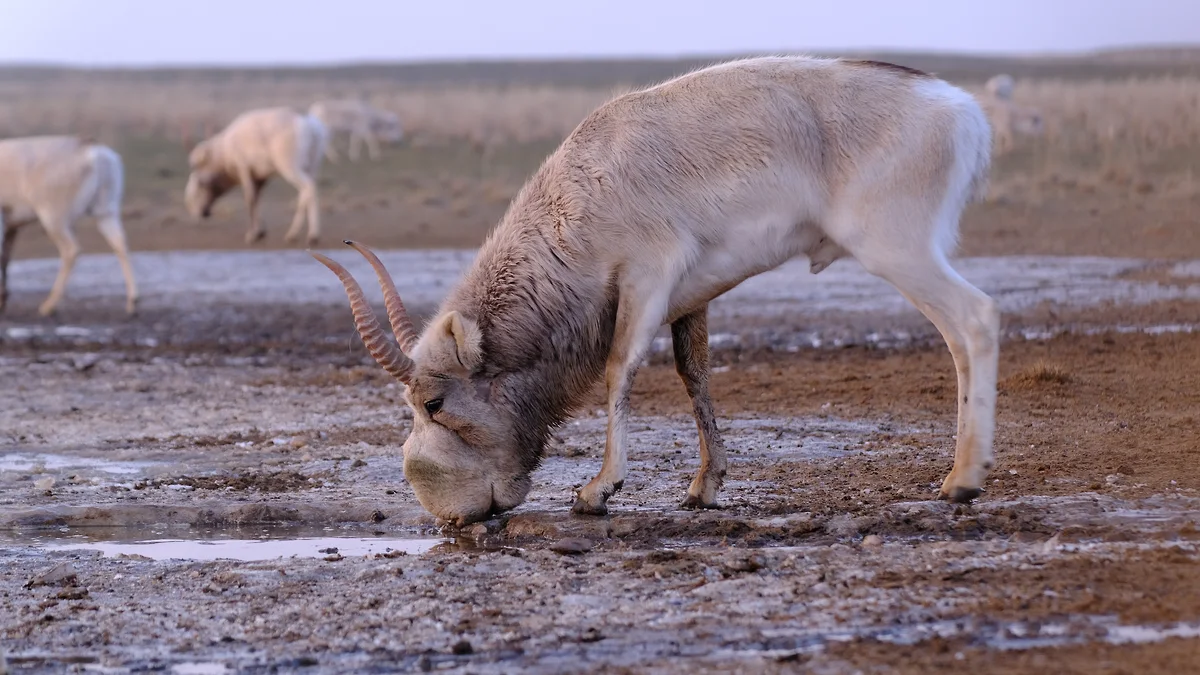
The positive effect of the four-year program is evidenced by the intensive growth of the saiga population - in December 2022 it amounted to 26.6 thousand individuals, which is more than five times higher than the data for 2018–2019. The assessment was carried out at the Institute of Ecology and Evolution of the Russian Academy of Sciences, calculations were carried out using satellite images using a neural network.
“This is our first experience of using artificial intelligence to count animals in space images,” shares senior researcher at the institute Anna Yachmennikova.
According to her, previously, counts were carried out from cars or small aircrafts, which had an extremely negative impact on saigas: cars violated the cover of vulnerable steppe ecosystems, and aircrafts sent animals into a panicked flight - there were cases of death from exhaustion. Moreover, such methods are not adequate for covering large areas at once.
“We have been using satellite images to count saigas since 2012, but until now this has been done manually. Saigas are graceful antelopes, they are much smaller than an elephant or a walrus; manual counting of them is very difficult and takes a lot of time. Artificial intelligence has made it possible to carry out this work much faster, and the results can be used not only for statistics, but also for making operational decisions,” says Anna Yachmennikova.
Stopping the depression
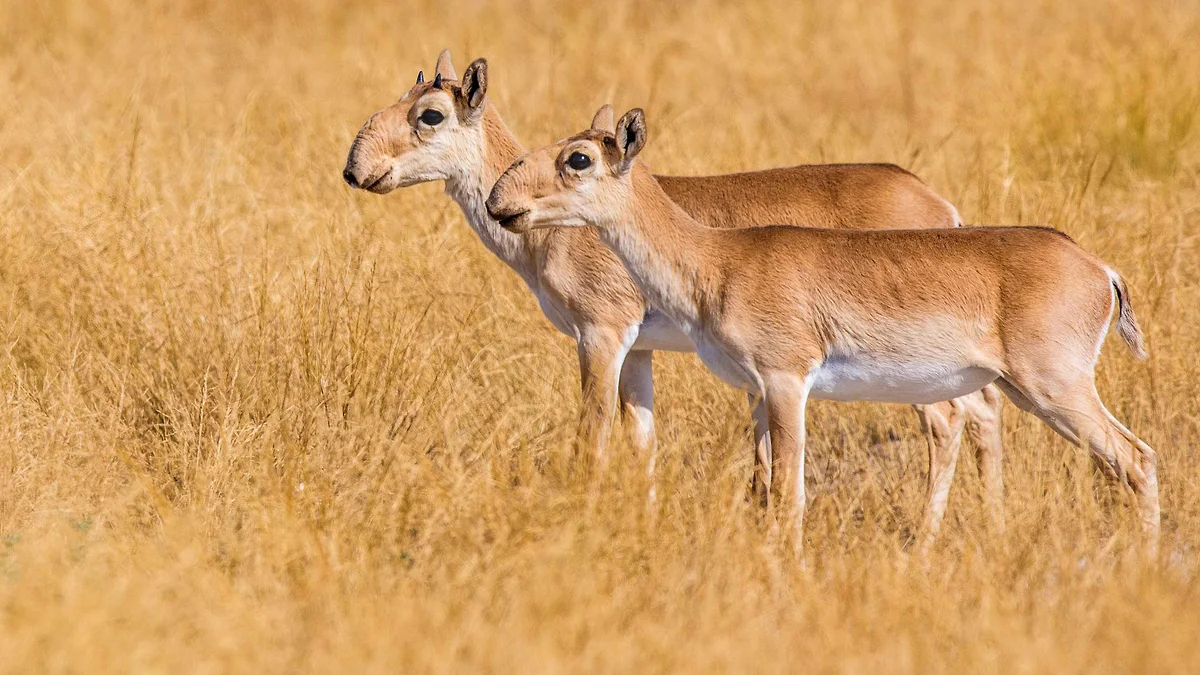
Even more impressive figures for the restoration of the saiga population are provided by the director of the Chyornye Zemli Nature Reserve, Bataar Ubushaev. According to him, at the end of 2023, the number of saigas in Russia was estimated at no less than 26–28 thousand individuals. For May 2024, taking into account young animals, the preliminary estimate is already 40 thousand individuals.
“Thanks to the timely financial support of LUKOIL, we were able to stop the depression in the number of saigas, stabilize the situation and achieve a sustainable increase in the number of this unique animal,” sums up Bataar Ubushaev.
Harmonious coexistence
2024 is the final year in LUKOIL’s current plan for the conservation and reintroduction of the saiga, but not the last in the history of this species’ struggle for survival.
According to Anna Yachmennikova, it is now almost impossible to completely return the relict antelope’s entire historical range - most of it has long been occupied by humans. Therefore, the task for the future is to ensure the harmonious coexistence of the two species.
